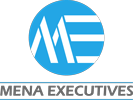In today’s competitive job market, organizations can no longer afford to rely on reactive hiring. The most successful companies have a steady flow of talent ready to step into key roles as soon as opportunities arise. This is especially true in fast-developing markets like Saudi Arabia, Qatar, and Dubai, where industries are expanding rapidly and demand for qualified professionals is high. To stay ahead, building a strategic placement pipeline—a structured system for attracting, assessing, and engaging talent before a vacancy occurs—is essential.
At Mena Executives Career, we specialize in creating such pipelines, helping companies across the GCC streamline their recruitment processes while offering candidates a clear and responsive pathway to meaningful careers. Here’s how businesses and HR teams can design and maintain a powerful placement pipeline that consistently delivers top-tier candidates.
What Is a Placement Pipeline?
A placement pipeline is a pre-qualified pool of candidates who have already been assessed and are ready to be considered for future job openings. This model allows companies to reduce hiring times, cut recruitment costs, and avoid the disruption caused by vacancies in mission-critical roles.
Instead of starting from scratch every time a position opens, employers can tap into a talent reservoir that matches their culture, goals, and long-term needs. This approach is particularly valuable in dynamic economies like Dubai, where companies often scale quickly and need to fill roles with minimal delay.
Steps to Building a Successful Placement Pipeline
1. Define Long-Term Hiring Needs
The first step is strategic planning. HR teams and leadership must collaborate to project future talent requirements based on business goals, upcoming projects, and anticipated retirements or resignations. For example, in Saudi Arabia, where Vision 2030 is driving growth in non-oil sectors, businesses must forecast demand in new industries like tourism, tech, and healthcare.
2. Develop Clear Candidate Profiles
To attract the right applicants, companies need to define ideal candidate profiles for key roles. This includes not just skills and qualifications, but personality traits, leadership style, and cultural alignment. In markets like Qatar, where global talent and local workforce development intersect, creating profiles that account for both expat and national candidates is crucial.
3. Leverage Technology for Sourcing
Use applicant tracking systems (ATS), AI-powered resume screening tools, and CRM platforms to build and manage a pipeline efficiently. Mena Executives Career uses advanced technology to segment candidates by industry, experience, and job readiness, allowing employers to access talent instantly when the need arises.
4. Use Targeted Headhunting and Outreach
A proactive pipeline requires reaching out to passive candidates who aren’t actively applying for jobs but may be open to new opportunities. Personalized, value-driven communication makes the difference. This is especially effective in Dubai and Qatar, where high performers often receive multiple offers and expect tailored engagement.
5. Offer Career Portals and Talent Pools
Create a branded “Career Job Apply” portal on your website where job seekers can register, submit CVs, and receive alerts for future roles. These platforms serve as a gateway for collecting data, managing interest, and providing timely follow-up. In Saudi Arabia, where digital transformation is a national priority, modern portals signal innovation and accessibility.
6. Maintain Regular Engagement
A pipeline is only valuable if candidates remain interested. Regular communication, industry insights, newsletters, and check-ins ensure that your talent pool stays warm and responsive. At Mena Executives Career, we keep our placement candidates engaged with updates on hiring trends in Dubai, Qatar, and beyond.
7. Build an Assessment Framework
Evaluate candidates before a vacancy opens using skills assessments, cultural fit tests, or structured interviews. This way, when a role becomes available, candidates can move straight to final-stage interviews or offer discussions—saving valuable time for both parties.
The Benefits of a Placement Pipeline
- Faster Hiring: Roles are filled more quickly because candidates are already screened.
- Reduced Costs: Less money spent on job ads, external recruiters, and last-minute hiring.
- Higher Quality Hires: Candidates are selected based on long-term potential, not urgency.
- Improved Employer Brand: A responsive process builds trust and attracts more talent over time.
- Stronger Workforce Planning: Aligns recruitment with strategic goals and future growth.
Case Example: Pipeline Success in the GCC
A multinational engineering firm expanding operations in Qatar faced consistent delays in hiring for project management roles. By partnering with Mena Executives Career, the firm built a dedicated pipeline of candidates from across the GCC, including Saudi Arabia and Dubai. Within three months, the company reduced its hiring time by 60% and improved employee retention by 25%.
Final Thoughts
In fast-moving business environments like Dubai, Saudi Arabia, and Qatar, talent is the ultimate competitive advantage. A placement pipeline ensures that your organization is never caught off guard by vacancies or market shifts. It empowers you to be proactive, strategic, and agile in hiring.
At Mena Executives Career, we help companies build sustainable talent pipelines through executive search, job vacancy management, headhunting, and recruitment process design. Whether you’re a growing enterprise or a regional leader, our tailored solutions ensure you always have the right talent at the right time.




